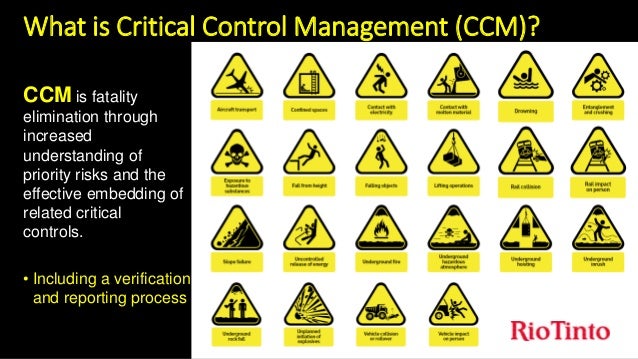What are Trading Bots and How Do They Work?
Trading bots are software programs designed to automate financial trading activities in various markets, including forex, stocks, and cryptocurrencies. These bots operate based on predefined algorithms and strategies, enabling them to execute trades autonomously and efficiently. By leveraging automated trading systems, traders can minimize emotional decision-making, reduce manual labor, and potentially increase profitability.
Critical variables trading bots rely on several factors to optimize their performance. These variables include market conditions, strategies and algorithms, backtesting and historical data, risk management, and user intervention. Understanding these factors is essential for traders seeking to maximize the potential of their trading bots and achieve long-term success.
Identifying Crucial Variables in Trading Bot Operations
Trading bots are sophisticated tools that rely on a multitude of factors to optimize their performance in financial markets. Understanding these critical variables is essential for traders seeking to maximize profitability, efficiency, and risk management. By examining these factors, traders can make informed decisions and fine-tune their bots for optimal results.
One of the most significant critical variables is the trading bot’s underlying algorithms and strategies. These elements dictate how the bot analyzes market data, identifies trading opportunities, and executes trades. Selecting appropriate algorithms and strategies is crucial, as they directly impact the bot’s ability to generate profits and manage risk. For instance, a bot designed for high-frequency trading may employ complex mathematical models and algorithms to capitalize on minute price fluctuations, while a bot focused on long-term investments may utilize fundamental analysis and trend-following techniques.
Another critical variable is market conditions, which can significantly affect trading bot performance. Factors such as volatility, liquidity, and market trends can influence a bot’s decision-making process and overall success. For example, a highly volatile market may present more trading opportunities for a bot designed to capitalize on price swings, while a less volatile market may favor a bot that focuses on trend following or mean reversion strategies. Similarly, a liquid market enables bots to execute trades quickly and at desirable prices, while illiquid markets may result in wider spreads and longer execution times, potentially impacting a bot’s performance.
Backtesting and historical data also play a vital role in trading bot performance. By testing a bot’s algorithms and strategies against past market data, traders can evaluate its potential performance and identify areas for improvement. However, it is essential to recognize the limitations of backtesting, as relying solely on past data may not account for unforeseen market conditions or future changes. Therefore, traders should employ realistic testing scenarios and consider incorporating forward testing or paper trading to further validate their bots’ performance.

The Role of Market Conditions in Trading Bot Success
Market conditions are a critical variable in trading bot performance, as they can significantly impact a bot’s ability to generate profits and manage risk. Factors such as volatility, liquidity, and market trends can influence a bot’s decision-making process and overall success. By understanding these market conditions and how they affect trading bots, users can make informed decisions and optimize their bot’s performance.
Volatility, which refers to the rate at which asset prices change, plays a crucial role in determining trading bot performance. Highly volatile markets, characterized by rapid price fluctuations, can present more trading opportunities for certain bots. For instance, a bot designed for high-frequency trading may capitalize on these minute price swings, generating profits through a large number of small trades. Conversely, a bot focused on long-term investments may struggle in highly volatile markets, as it may be challenging to identify and follow consistent trends.
Liquidity, or the ease with which assets can be bought and sold without affecting their market price, is another essential factor in trading bot performance. Liquid markets enable bots to execute trades quickly and at desirable prices, which is crucial for maintaining profitability and minimizing slippage. Illiquid markets, on the other hand, may result in wider spreads and longer execution times, potentially impacting a bot’s performance. Traders should consider market liquidity when selecting trading pairs and setting up their bots to ensure optimal performance.
Market trends, which can be broadly categorized as bullish (rising prices) or bearish (falling prices), also influence trading bot performance. Trend-following bots, which aim to identify and capitalize on existing trends, typically perform well in markets with clear directional movements. However, these bots may struggle in markets characterized by choppy price action or consolidation, as it can be challenging to distinguish genuine trends from short-term fluctuations. Conversely, mean-reversion bots, which seek to profit from temporary price deviations, may find more success in markets with less defined trends, as they can exploit these short-term fluctuations more effectively.
By understanding the role of market conditions in trading bot performance, users can make informed decisions about bot selection, strategy, and configuration. Regularly monitoring and analyzing market conditions can help traders adapt their bots to changing market environments, ensuring long-term success and profitability.

Strategies and Algorithms: A Key Variable in Trading Bot Performance
Selecting appropriate strategies and algorithms is a critical variable in trading bot performance. These elements significantly influence a bot’s ability to generate profits and manage risk effectively. By understanding the various strategies and algorithms available, users can make informed decisions and optimize their bot’s performance.
Trading strategies refer to the methods used by bots to identify and capitalize on market opportunities. Some common strategies include trend following, mean reversion, momentum trading, and arbitrage. Trend-following bots aim to identify and follow existing trends in the market, capitalizing on price movements in a particular direction. Mean-reversion bots, on the other hand, seek to profit from temporary price deviations, assuming that prices will eventually return to their historical averages. Momentum trading strategies involve buying assets with strong upward trends and selling those with weak downward trends. Arbitrage strategies exploit pricing discrepancies between different markets or assets, allowing bots to profit from the price differences.
Algorithms, on the other hand, are the mathematical models and calculations used by bots to execute trades based on the selected strategies. These algorithms can range from simple moving averages to complex machine learning models. For instance, a moving average crossover algorithm uses two or more moving averages to generate buy and sell signals. More advanced algorithms, such as neural networks or genetic algorithms, can analyze large datasets and identify complex patterns, enabling bots to make more informed trading decisions.
When selecting strategies and algorithms for trading bots, users should consider factors such as market conditions, time frames, and risk tolerance. For example, trend-following strategies may perform well in highly volatile markets, while mean-reversion strategies may be more suitable for markets with less defined trends. Similarly, shorter time frames may require more responsive algorithms, while longer time frames may allow for more complex calculations. Additionally, users should consider their risk tolerance when selecting strategies and algorithms, as some methods may be more aggressive than others, potentially leading to higher profits but also higher losses.
In conclusion, the selection of appropriate strategies and algorithms is a critical variable in trading bot performance. By understanding the various options available and considering factors such as market conditions, time frames, and risk tolerance, users can optimize their bot’s performance and achieve long-term success in automated trading.

The Impact of Backtesting and Historical Data on Trading Bot Performance
Backtesting and historical data play a crucial role in trading bot performance. These tools allow users to evaluate the effectiveness of their bots and strategies using past market data, providing valuable insights into potential profitability and risk management. However, it is essential to understand the limitations of backtesting and the importance of realistic testing for successful trading bot operations.
Backtesting is the process of testing a trading strategy on historical data to assess its viability and performance. By simulating trades based on past market conditions, users can evaluate the potential profitability and risk of their bots under various market scenarios. This process enables users to refine their strategies, optimize their algorithms, and identify potential weaknesses before deploying their bots in live markets.
Historical data is the foundation of backtesting, providing the market information necessary to simulate past trades. High-quality historical data should be accurate, comprehensive, and diverse, covering various markets, assets, and time frames. By using a wide range of historical data, users can ensure that their bots are tested under different market conditions, increasing the likelihood of successful performance in live markets.
However, it is essential to recognize the limitations of backtesting and historical data. Past performance is not indicative of future results, and market conditions are constantly changing. Factors such as economic events, regulatory changes, and global crises can significantly impact market dynamics, rendering historical data less relevant. Additionally, backtesting assumes that users have access to unlimited capital, perfect liquidity, and zero transaction costs, which may not be the case in live markets. As a result, users should approach backtesting results with caution and consider the potential impact of real-world factors on their bot’s performance.
To maximize the value of backtesting and historical data, users should focus on realistic testing and validation. This involves testing bots under various market conditions, including different asset classes, time frames, and volatility levels. Users should also consider stress-testing their bots, exposing them to extreme market scenarios to evaluate their resilience and risk management capabilities. By taking a comprehensive and pragmatic approach to backtesting and historical data, users can improve their bot’s performance and increase their chances of long-term success in automated trading.

Risk Management: A Critical Component of Trading Bot Operations
In the world of trading bots, risk management is a critical factor that can significantly impact profitability and long-term success. Proper risk management involves identifying, assessing, and mitigating potential risks associated with automated trading systems, ensuring that losses are minimized, and profits are protected. By implementing effective risk management strategies, users can improve their bot’s performance, increase their chances of success, and maintain a sustainable trading operation.
One of the most important aspects of risk management in trading bots is setting appropriate stop-loss orders. Stop-loss orders are predefined levels at which a trade is automatically closed to limit potential losses. By setting clear stop-loss levels, users can ensure that their bots do not incur excessive losses during market downturns or unexpected events. Additionally, users should consider implementing take-profit orders, which automatically close a trade when a predefined profit level is reached, ensuring that profits are locked in and not subject to market volatility.
Another critical risk management strategy is diversification. By spreading investments across various assets, markets, and time frames, users can reduce their exposure to any single investment and minimize potential losses. Diversification can also help users take advantage of different market opportunities, increasing their chances of success and improving their overall trading performance. Users should consider diversifying their portfolios by investing in various assets, such as stocks, currencies, commodities, and cryptocurrencies, and by using multiple trading strategies and algorithms.
Proper position sizing is also essential for effective risk management in trading bots. Position sizing involves determining the appropriate amount of capital to allocate to each trade, ensuring that losses do not exceed predefined levels. By using proper position sizing techniques, users can limit their exposure to any single trade and minimize potential losses. Users should consider implementing position sizing strategies such as fixed fractional position sizing, where a fixed percentage of capital is allocated to each trade, or fixed ratio position sizing, where the position size is adjusted based on the risk-reward ratio of each trade.
Finally, regular monitoring and evaluation of trading bot performance is critical for effective risk management. By regularly reviewing their bot’s performance, users can identify potential weaknesses, refine their strategies, and adjust their risk management techniques accordingly. Regular monitoring can also help users stay up-to-date with market conditions and adjust their bots to changing market dynamics, ensuring that their trading operation remains sustainable and profitable in the long term.

How to Choose the Right Trading Bot: Factors to Consider
When it comes to selecting a trading bot, there are several critical factors that users should consider to ensure that they choose a reliable and effective automated trading system. By carefully evaluating various aspects of a trading bot, users can improve their chances of success and maximize their profitability in financial markets. In this article, we will discuss some of the most important factors to consider when choosing a trading bot, including reputation, user reviews, transparency, and underlying strategies and algorithms.
Reputation
One of the most critical factors to consider when choosing a trading bot is its reputation. Users should look for bots that have a strong reputation in the financial community, with positive reviews and testimonials from other users. A bot with a good reputation is more likely to be reliable and effective, with a proven track record of success in financial markets. Users can evaluate a bot’s reputation by researching its history, checking its registration and regulatory status, and reviewing its performance metrics and user feedback.
User Reviews
Another important factor to consider when choosing a trading bot is user reviews. User reviews can provide valuable insights into a bot’s performance, reliability, and user experience. Users should look for bots with positive reviews from other users, indicating that the bot is easy to use, reliable, and effective. Users can find user reviews on various online forums, social media platforms, and dedicated review websites, providing a wealth of information and feedback on different trading bots.
Transparency
Transparency is also a critical factor to consider when choosing a trading bot. Users should look for bots that are transparent about their underlying strategies, algorithms, and performance metrics. A transparent bot is more likely to be trustworthy and reliable, with a clear and understandable approach to automated trading. Users should look for bots that provide detailed information about their strategies, algorithms, and performance, as well as clear and concise documentation and user guides.
Underlying Strategies and Algorithms
Finally, users should consider the underlying strategies and algorithms of a trading bot when making their selection. Different bots use different strategies and algorithms, with varying levels of complexity and sophistication. Users should look for bots that use proven and effective strategies and algorithms, with a clear and understandable approach to automated trading. Users should also consider the bot’s risk management techniques, such as stop-loss orders and position sizing, to ensure that their investments are protected and their profits are maximized.
In conclusion, choosing the right trading bot is a critical decision that can significantly impact a user’s profitability and success in financial markets. By considering factors such as reputation, user reviews, transparency, and underlying strategies and algorithms, users can improve their chances of success and maximize their returns. By carefully evaluating different trading bots and selecting a reliable and effective system, users can take advantage of automated trading and achieve their financial goals in the long term.
Monitoring and Adjusting Trading Bots for Optimal Performance
When it comes to trading bots, understanding critical variables and selecting the right system are essential for success. However, even the best trading bots require regular monitoring and adjustment to maintain optimal performance and maximize profitability. In this article, we will discuss the importance of monitoring and adjusting trading bots, as well as the role of user intervention and adaptability in long-term success.
The Need for Regular Monitoring
Regular monitoring is critical for maintaining the performance of trading bots. By monitoring a bot’s performance, users can identify any issues or discrepancies, such as unexpected losses or deviations from the expected strategy. Monitoring can also help users stay up-to-date with market conditions and adjust their bot’s settings accordingly. Regular monitoring can be done manually, through various tools and platforms, or through automated alerts and notifications.
The Role of User Intervention
User intervention is also an important factor in trading bot performance. While automated systems can handle many aspects of trading, there are certain situations where human intervention is necessary. For example, users may need to intervene in the event of a technical issue, a market disruption, or a change in market conditions. User intervention can also be useful in adjusting a bot’s settings or strategies, based on performance data and user feedback.
Adaptability and Long-Term Success
Adaptability is a critical component of long-term success in trading bots. Market conditions and strategies can change over time, and a bot that is unable to adapt may become less effective or even obsolete. Users should look for bots that are flexible and adaptable, with the ability to adjust their settings and strategies based on changing market conditions. Adaptability can also come in the form of user-defined settings and customization options, allowing users to tailor the bot to their specific needs and preferences.
The Importance of Regular Updates and Maintenance
Finally, regular updates and maintenance are essential for maintaining the performance and security of trading bots. Developers should provide regular updates and patches, addressing any bugs, vulnerabilities, or performance issues. Users should also ensure that their bots are up-to-date with the latest market data and market conditions, to ensure optimal performance and profitability. Regular maintenance can also help prevent technical issues and ensure the longevity and reliability of the bot.
In conclusion, monitoring and adjusting trading bots is a critical component of long-term success in automated trading. By regularly monitoring a bot’s performance, intervening when necessary, and ensuring adaptability and regular updates, users can maintain optimal performance and maximize profitability. By following best practices and staying up-to-date with market conditions and bot technology, users can improve their chances of success and achieve their financial goals with trading bots.

